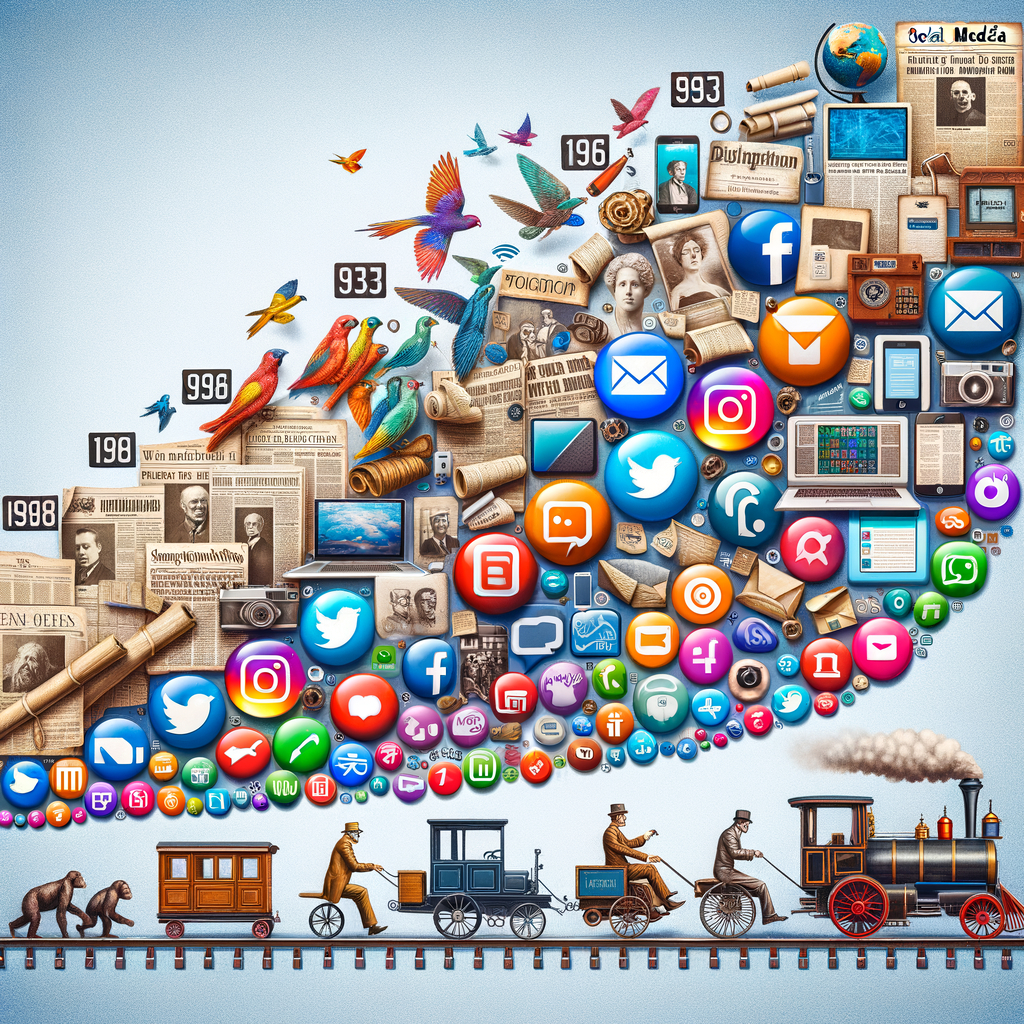Physical Address
304 North Cardinal St.
Dorchester Center, MA 02124
Physical Address
304 North Cardinal St.
Dorchester Center, MA 02124

Social media has become an integral part of our daily lives. It has drastically changed the way we communicate, share information, and even conduct business. But how did it evolve to what it is today? This article aims to explore the evolution of social media from its humble beginnings to the powerful platform it is now.
The roots of social media date back to the 1970s with the creation of email. Although not a social network in the traditional sense, email was one of the first digital mediums that allowed people to connect and communicate over long distances instantly. In 1980, Usenet was created as a global discussion system where users could post public messages on various topics.
In 1997, Six Degrees emerged as one of the first recognisable social networking sites. It allowed users to create profiles and list their friends. However, due to slow internet connections and limited functionality, it wasn’t until the early 2000s that social media started gaining significant traction.
In 2003, MySpace was launched and quickly became popular among teenagers and young adults for its unique customisation features. Users could create personal profiles complete with music playlists, blogs, photos and videos.
However, it was Facebook’s launch in 2004 that truly revolutionised social media. Initially designed for Harvard students only, Facebook eventually expanded its reach globally. With its user-friendly interface and innovative features like News Feed and Timeline, Facebook soon surpassed MySpace in terms of popularity.
Twitter followed suit in 2006 with its unique microblogging service that limited posts or ‘tweets’ to just 140 characters (later expanded to 280). Twitter’s real-time updates made it a popular platform for news dissemination and public discourse.
With the advent of smartphones, social media became more accessible than ever before. Instagram, launched in 2010, capitalised on this trend by offering a mobile-first experience focused on photo and video sharing. Snapchat followed in 2011 with its ephemeral messaging service that allowed users to send disappearing photos and videos.
The rise of mobile technology also saw the growth of messaging apps like WhatsApp, WeChat, and Messenger. These platforms not only offered free text messaging but also included features like voice calls, video calls, and file sharing.
Today’s social media landscape is more diverse than ever. TikTok has taken the world by storm with its short-form video content, while LinkedIn continues to dominate professional networking. Meanwhile, Facebook remains a powerhouse with over 2 billion active users worldwide.
In recent years, we’ve seen an increased focus on privacy and data security in response to growing concerns from users and regulatory bodies alike. Platforms are also investing heavily in artificial intelligence (AI) to improve user experience through personalised content curation.
As we look towards the future, it’s clear that social media will continue to evolve. Emerging trends such as virtual reality (VR) and augmented reality (AR) promise to transform the way we interact online. There’s also an increasing interest in decentralised social networks that offer greater control over personal data.
No matter how it evolves though, one thing is certain: social media will remain a crucial part of our digital lives for years to come.